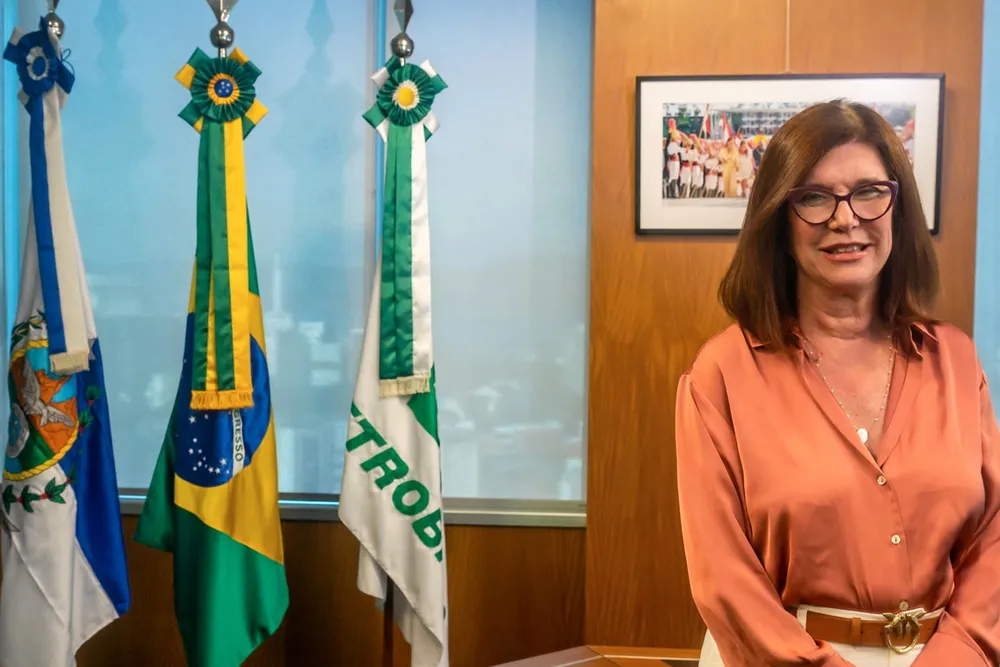Brazilian giant Petrobras sticks by offshore wind under new CEO with Rio project plan
Brazil's potential has attracted plenty of interest but lawmakers have been sitting on a bill that would put the regulatory framework in place

Brazilian oil giant Petrobras underlined its continued interest in developing offshore wind in its home country – despite a recent change of CEO – by signing a memorandum of understanding over a pilot project off the state of Rio de Janeiro.
The MoU, signed by Petrobras director of energy transition and sustainability Mauricio Tolmasquim and Rio de Janeiro's Governor Claudio Castro, outlined feasibility studies for the proposed pilot offshore wind project.
The state of Rio de Janeiro sits in the southeast region where much of Brazil's population and industry are located, offering attractive offshore winds and established fabrication industries and logistics ports, due to the presence of a massive offshore oil and gas sector.
Several companies, including Petrobras, Shell, Corio, Ocean Winds and TotalEnergies, have signed MoUs looking ahead to the expected development of an offshore wind industry in Brazil, with significant interest focusing on the port complex of Acu, to the north of Rio de Janeiro's capital city.
Petrobras has been carrying out extensive measuring and mapping surveys to assess the potential of wind power projects in other regions including Rio Grande do Norte, Ceara and Espirito Santo.
In Rio de Janeiro, the company began evaluating the potential for offshore wind power in 2020 with the deployment of an autonomous floating light detection and ranging (Lidar) system integrated with one of its oil platforms in the Campos basin.
Still keen?
The new MoU with Rio de Janeiro has added significance, however, as it was the first sign of continued interest in developing offshore wind capacity since the appointment of Magda Chambriard as Petrobras CEO.
Chambriard's predecessor Jean Paul Prates came to Petrobras as an enthusiastic proponent of offshore wind. As a former senator, Prates played a key role in drafting a proposed regulatory framework for the sector in a bill that has become bogged down in the Brazilian Congress.
But Prates was dismissed by Brazil's President Luiz Inacio Lula da Silva last month after a simmering political dispute over the distribution of Petrobras dividends.
She has spoken out strongly in favour of expanding the company's horizons for exploring oil and gas into areas where few wells have been drilled yet, such as the vast "Equatorial Margin" play that lies off the country's northern coast.
But Tolmasquim reaffirmed the company's interest in offshore wind during the MoU signing, held on Tuesday.
“Petrobras has a rich history of using technology to enable large projects in a marine environment and the execution of pilot projects is one of the tools for acquiring the necessary knowledge, allied to the initiative of carrying out the largest campaign of offshore wind mapping in Brazil,” he commented.
In its statement, Petrobras added that the studies would look at potential for offshore wind as a commercial business as well as identifying possible bottlenecks and analysing the possibilities for using offshore wind to decarbonise the operations of the company's offshore oil and and gas operations.
"This partnership with Petrobras.... is an important reinforcement for our process of consolidating Rio de Janeiro as a protagonist in the energy transition and ensuring a sustainable future for the state," declared Governor Castro.
Future leader?
Under Prates, Petrobras positioned itself to become the leading offshore wind player in Brazil, submitting permitting requests to the country's federal environmental agency (Ibama) in 10 areas with a potential 23GW.
Seven areas of these are in the Northeast, including three in Rio Grande do Norte, three in Ceara and one in Maranhao.
Another two are in the Brazilian Southeast, including one in Rio de Janeiro and one in Espirito Santo. Permitting has already been requested for a single are in Brazil's South, off the state of Rio Grande do Sul.
Petrobras is also carrying out joint studies with Norwegian oil and gas major Equinor with a view to developing wind power on seven offshore areas with another 14.5 GW of potential.
(Copyright)